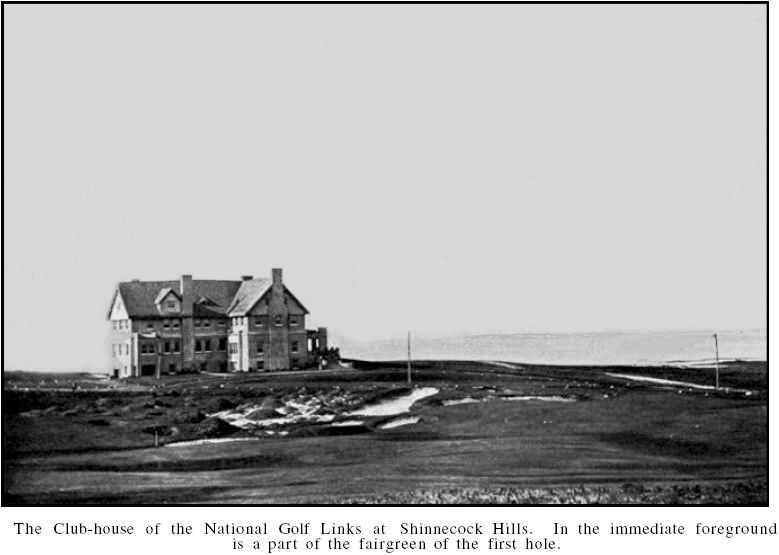A few more details. When the course was originally planned and the land secured 1906, the idea was to start and end the course near the Shinnecock Inn (just being constructed) and use the Inn as a temporary clubhouse, thus enabling NGLA to focus on perfecting the course. Course construction and grow-in began in 1907 but the newly built Shinnecock Inn burned to the ground in the early spring of 1908. Work on the golf course continued in 1908 and while it was a struggle to get grass to take hold in the sandy soil (and while changes and improvements to the course may have already been underway) CBM and some of the founders began golfing over a very rough NGLA in the summer 1909 (if not before.) Early reports indicate that, in order to temporarily resolve their clubhouse issue, NGLA arranged to share Shinnecock's clubhouse until they could get their own built.
On July 2-4, 1910 a tournament (billed as an informal gathering for the founders and associate members but later referred to as an invitational) "informally marked the opening of the course." Tents were used in lieu of a clubhouse and play started on what is now No. 10. John Ward, a founder, scorched the back (now the front) for a 32 in the first round of matchplay, starting the side in 2-2-4-2.
While play had begun in 1909 or before, NGLA did not "formally" open did until the clubhouse was finished, September 16, 1911.
Here is a photo of the clubhouse as it appeared in 1911 (from CBM's Statement to the Founders, 1/4/1912):

Here is a photo of the clubhouse from 1912 from an article by British golf writer Henry Leach in American Golfer.

An interesting question is whether the current location was always contemplated as the final location of the clubhouse, or whether it was decided upon only after the Inn burned down. While I suspect the former, I don't think the information I have seen is entirely dispositive one way or another.
[As for "the original" entry road, the 10th tee was very close to existing roads and/or roads developed in conjunction with the development of the hotel and adjacent land, so an entry road wasn't really much of an issue. That said, prior to the shifting of the cape green road to the current clubhouse was to the LEFT of the cape hole. The road crossed in front of the eden green (this is now the road to the maintenance shop.)]
As an aside, I recently read a rather comical critique of NGLA in the form of a 1916 letter to the editor of one of the NY papers. NGLA's major flaw? The clubhouse was too far away from the 18th green. The critic wrote that the green ought to be moved and anchored to the clubhouse for the viewing pleasure of the clubhouse gallery. He recommended that this could have been accomplished either by shortening the hole or by pushing the tee back. The critic was obviously well ahead of his time. Were he alive to day would likely be a prominent member of cga.com.